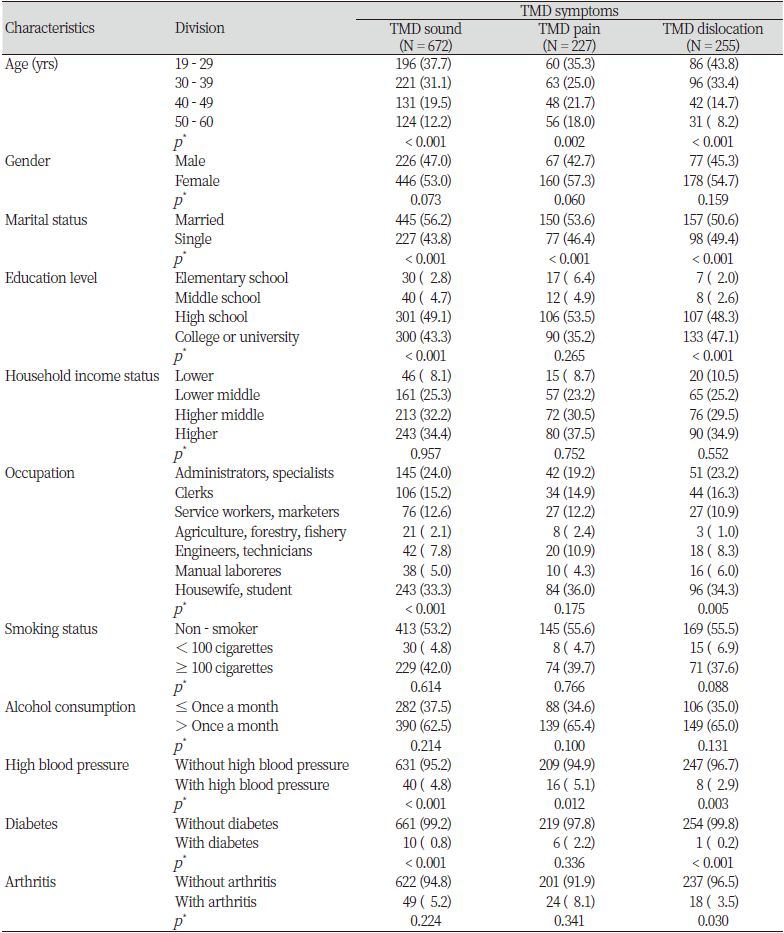Abstract
Objectives: The purpose of this study was to examine the effects of oral and mental health status on temporomandibular joint disorders (TMDs) and the effects of TMD symptoms on quality of life using data from the 5th 2012 National Health and Nutrition Examination Survey. Methods: A total of 1,154 people were selected as subjects for the study. Temporomandibular joint (TMJ) sounds (672 persons), TMJ pain (227 persons), and TMJ dislocation (255 persons) were the factors studied. The complex sample chi-square test was performed to compare demographic characteristics according to the three groups of TMD symptoms. Complex sample logistic regression analysis was performed to confirm the effect of oral and mental health status on TMDs, and complex sample linear regression analysis was performed to check the effect of TMDs on the quality of life (EQ-5D). Results: After adjusting for demographic characteristics, those without TMJ sound symptoms had lower pain/discomfort (OR: 0.055, CI: -0.095 to -0.016) and anxiety/depression (OR: 0.053, CI: -0.092 to -0.014). Those without TMJ pain had lower pain/discomfort (OR: 0.119, CI: -0.192 to -0.046) and anxiety/depression (OR: 0.071, CI: -0.137 to -0.004). Pain/discomfort (OR: 0.063, CI: -0.125 to -0.001) was lower in those without TMJ dislocation symptoms. After adjusting for mental health status, pain/discomfort (OR: 0.088, CI: -0.161 to -0.014) was found to be lower in those without TMJ pain symptoms (
Figures & Tables

Table 1. Differences in TMD symptoms according to demographic characteristics Unit : N(%)


